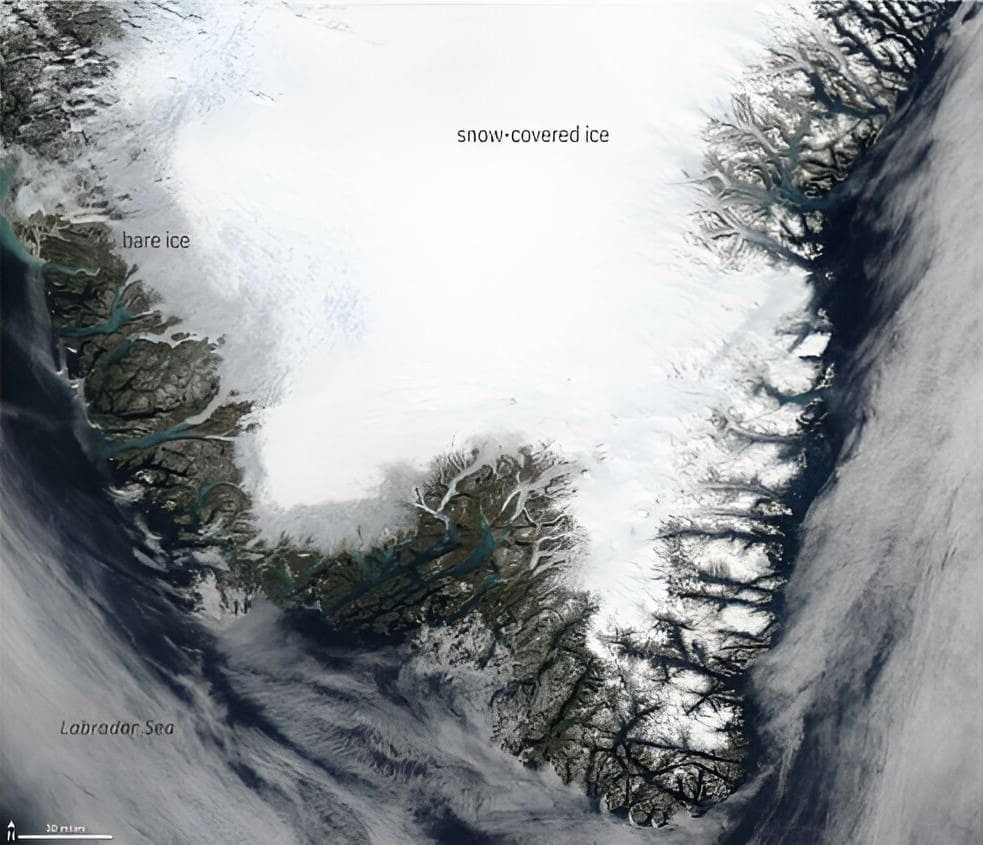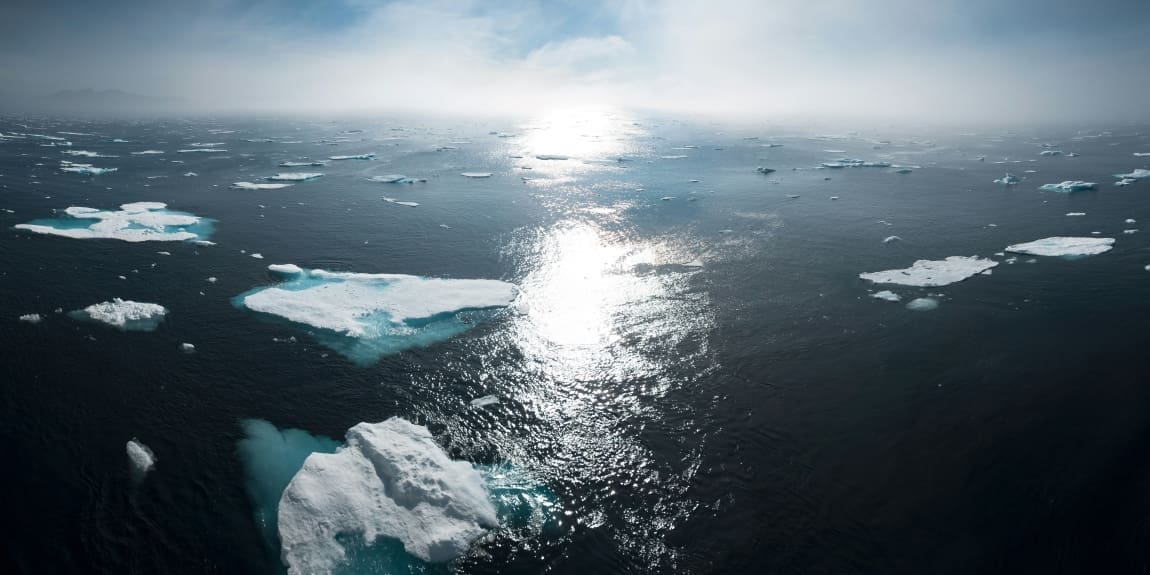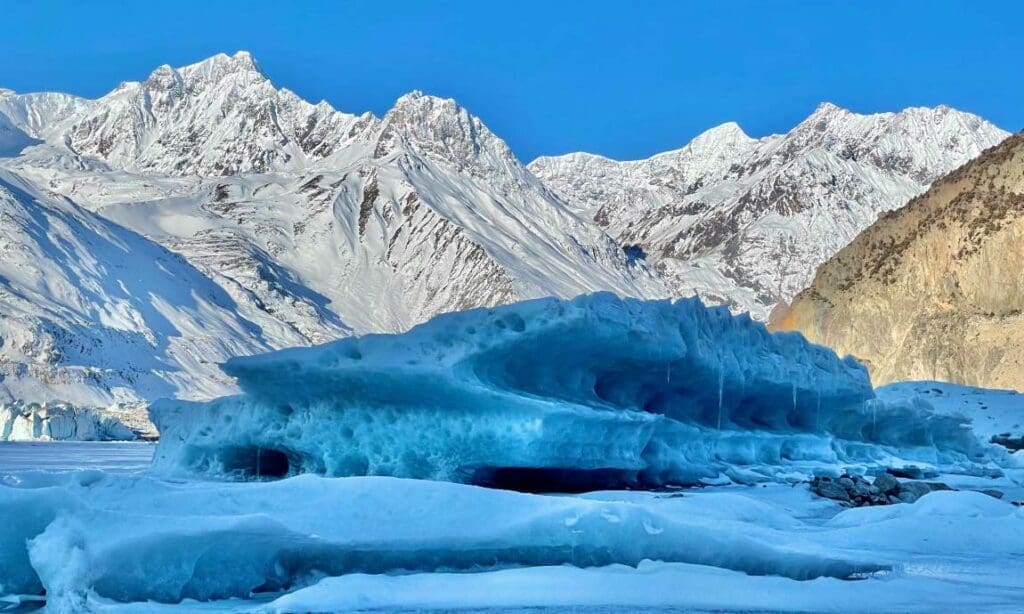By University of California – Irvine
As the planet continues to warm due to human-driven climate change, accurate computer climate models will be key in helping illuminate exactly how the climate will continue to be altered in the years ahead.
In a study published in the Journal of Geophysical Research: Atmospheres, a team led by researchers from the UC Irvine Department of Earth System Science and the University of Michigan Department of Climate and Space Sciences and Engineering reveal how a climate model commonly used by geoscientists currently overestimates a key physical property of Earth’s climate system called albedo, which is the degree to which ice reflects planet-warming sunlight into space.

“We found that with old model versions, the ice is too reflective by about five percent,” said Chloe Clarke, a project scientist in UC Irvine professor Charlie Zender’s group. “Ice reflectivity was much too high.”
The amount of sunlight the planet receives and reflects is important for estimating just how much the planet will warm in the coming years. Previous versions of the model, called the Energy Exascale Earth System Model (E3SM), overestimated albedo because they did not account for what Clarke described as the microphysical properties of ice in a warming world.
Those properties include the effects things like algae and dust have on albedo. Dark-colored algae and dust can make snow and ice less reflective and less able to reflect sunlight.
To do the analysis, Clarke and her team studied satellite data to track the albedo of the Greenland Ice Sheet. They found that E3SM reflectivity overestimates the reflectivity of the ice sheet, “meaning the model estimates less melt than what would be expected from the ice microphysical properties,” said Clarke.
But with the new ice reflectivity incorporated into the model, the Greenland Ice Sheet is melting at a rate of about six gigatons more than in older model versions. This is based on albedo measurements that are more consistent with satellite observations.
Clarke hopes her team’s study stresses the importance of the seemingly minuscule properties that can have far-reaching consequences for the overall climate. “I think our work is going to help models do a much better job of helping us capture snow and ice-related climate feedbacks,” she said.
Next, Clarke wants to study different icy parts of the planet to gauge how widespread the albedo discrepancy is in E3SM.
“Our next steps are to get it so it is functional globally and not just valid over Greenland,” said Clarke, who also intends to compare the new Greenland Ice Sheet melt rates to observations to measure how much more accurate the new ice albedo is. “It would be useful to apply it to glaciers in places like the Andes and Alaska.”
Additional authors include Raf Antwerpen (Lamont-Doherty Earth Observatory), Mark G. Flanner (University of Michigan), Adam Schneider (National Oceanic and Atmospheric Administration), Marco Tedesco (Lamont-Doherty Earth Observatory) and Charlie S. Zender (UC Irvine). Funding information is listed in the study.
***
About the University of California, Irvine: Founded in 1965, UCI is a member of the prestigious Association of American Universities and is ranked among the nation’s top 10 public universities by U.S. News & World Report. The campus has produced five Nobel laureates and is known for its academic achievement, premier research, innovation and anteater mascot.
More information: C. A. Whicker-Clarke, R. Antwerpen, M. G. Flanner, A. Schneider, M. Tedesco, C. S. Zender, ‘The Effect of Physically Based Ice Radiative Processes on Greenland Ice Sheet Albedo and Surface Mass Balance in E3SM’, Journal of Geophysical Research: Atmospheres (vol. 129 Iss. 7; 2024). DOI: 10.1029/2023JD040241 | UCI Press Release / Material. Featured image credit: William Bossen | Unsplash




